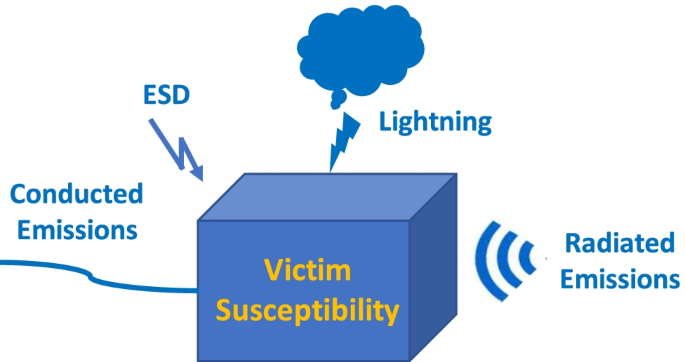In general, electronic devices and systems could be susceptible to being undesirably obstructed through electromagnetic interference (EMI). EMI could interfere with a communication link and also with certain kind of devices, for instance, certain type of devices used in hospital environments that save human lives. This alarming condition is intensified by the fact that companies develop new medical devices that are more effective, provide better care, and are easily available for patients. However, such devices are highly affected by EMI in their vicinity. It is clearly demonstrated that there is a need to find a new way to solve this issue of managing EMI in diverse health-associated scenarios.
Electromagnetic interference has a wide range of effects on wireless communications systems, including magnetic and radio-frequency interruptions and infrequent system failures. Electrical devices and emitters are the most typical sources of interference. EMI sources can be classified as radiated emissions and conducted emissions, which are illustrated in the figure below.

EMI could occur in diverse ways and from different sources. Yet, it starts from the undesirable emissions which are available, and harmlessly affect the performance of an electronic system. Multiple EMIs have a different impact on the communication link to degrade the system performance. In different ways, it could occur and be entered into the communication system. The ways through which EMI could occur are a source, a transmission path, and a response or destination.
- Source of EMI: The source of EMI is one way to differentiate the type of EMI, whether it is a man-made or natural occurrence. The man-made interference could occur due to the activities of the electronic device in the locality of the device on the receiver side that is enduring the interference. Natural interference, this type of EMI could be produced through natural sources and phenomena such as atmospheric types of noise like thunder, lightning, or storms.
- Bandwidth of EMI: The alternative means of electromagnetic interference could be characterized by bandwidth. Bandwidth is the range of frequencies in which EMI can be experienced. Furthermore, it has to be separated into two more types: narrowband EMI and broadband EMI. In the narrowband EMI is used for the single carrier source; in other words, narrowband interference frequencies caused the spurious signal for the intermodulation that appeared at different points of the spectrum in the signal. The broadband EMI could be caused by a large variety of sources from various portions of the spectrum. The common cause of broadband EMI is an arcing effect or the spark that is continuously generated by the power lines.
- Duration of EMI: The EMI could be categorized based on interference duration as well, which is also known as the time spent experiencing the interference. It splits into two more types of likewise continuous EMI and Impulsive EMI. Continuous EMI is the source that emits interference continuously because its name states whether it is man-made or natural but constantly experiencing the radiation that it emits. Impulsive EMI is also continuous with nature but starts for a very short period, like lightning, switching sources, and all others that contribute to the impulsive noise that could be the cause of interference in the current or voltage.
The excessive use of IoT and 5G devices in medical applications will degrade the performance of the communication system. Thus, a digital communication system has been implemented in medical scenarios to enhance performance. It also increased the number of electronic devices that are used in medical systems, which radiate impulsive noise and create interference for other devices in their vicinity.
Therefore, it is necessary to reduce it by using effective techniques and efficient digital algorithms.
Various modulation techniques, as well as encoding and encryption, can be used to increase bit error rates (BER) and signal quality. Communication systems must be properly designed by considering important parameters which have a direct or indirect impact on the performance of the system. Thus, it will lead to a robust and effective communication system against the various EMI impacts.
